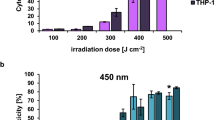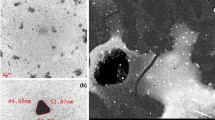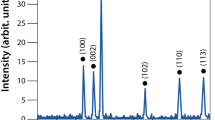Abstract
The physical nature of small air ions is well established and it is recognised that they can produce a variety of biological effects1. However, in only a few instances have any underlying biochemical changes been detected2–4. Theoretically, one can consider the hydrated Superoxide radical anion (O2−) (H2O)n with n≃4–8 as a likely candidate for a biologically active species of negative air ion5. The chemical and biological reactivity of Superoxide is high6 and includes a leading role in bacterial killing caused by radiation7,8, in which Superoxide dismutase (SOD), an enzyme that catalyses the reaction: O2−+O2−2H→H2O2+O2 protected markedly. Other studies have also demonstrated the bactericidal effect of O2− (refs 9–11). Inasmuch as the bactericidal action of small negative air ions has been repeatedly confirmed, we decided to test for the involvement of O2− in this phenomenon by evaluating the protective effect of SOD. Our results show strong O2− involvement in negative air ion bacterial kill.
This is a preview of subscription content, access via your institution
Access options
Subscribe to this journal
Receive 51 print issues and online access
$199.00 per year
only $3.90 per issue
Buy this article
- Purchase on Springer Link
- Instant access to full article PDF
Prices may be subject to local taxes which are calculated during checkout
Similar content being viewed by others
References
Kreuger, A. P. & Reed . Science 193, 1209–1213 (1976).
Kotaka, S., Krueger, A. P. & Andriese, P. C. Int. J. Biometeor. 12, 85–92 (1968).
Krueger, A. P. et al. Int. J. Biometeor. 10, 29–38 (1966).
Krueger, A. P., Andriese, P. C. & Kotaka, S. Int. J. Biometeor. 12, 225–239 (1968).
Announcement of the Joint Committee on Atmospheric Electricity of the Union Geodesique et Geophysique Internationale, 1967: Discussion on Mobility of Atmospheric Ions. Symposium at Lucerne, Switzerland. 2 October 1967.
Fridovich, I. in Free Radicals in Biology Vol. 1 (ed. Pryor, W. A.) 239–277 (1976).
Misra, H. P. & Fridovich, I. Archs Biochem. Biophys. 176, 577–581 (1976).
Oberley, L. W., Lindgren, A. L., Baker, S. A. & Stevens, R. H. Radiat. Res. 68, 320–328 (1976).
Gregory, E. M., Yost, F. J. Jr & Fridovich, I. J. Bact. 115, 987–991 (1973).
Babior, B. M., Carnutte, J. T. & Kipnes, R. S. J. Lab. clin. Med. 85, 235–244 (1975).
Rosen, H. & Klebanoff, S. J. J. exp. Med. 149, 27–39 (1979).
Krueger, A. P., Reed, E. J., Brook, K. B. & Day, M. B. Int. J. Biometeor. 19, 65–71 (1975).
McCord, J. M. & Fridovich, I. J. biol. Chem. 244, 6049–6055 (1969).
Kellogg, E. W. III & Fridovich, I. J. biol. Chem. 250, 8812–8817 (1975); 252, 6721–6728 (1977).
Niehaus, W. G. Jr Bio-org. Chem. 7, 77–84 (1978).
Author information
Authors and Affiliations
Rights and permissions
About this article
Cite this article
Kellogg, E., Yost, M., Barthakur, N. et al. Superoxide involvement in the bactericidal effects of negative air ions on Staphylococcus albus. Nature 281, 400–401 (1979). https://doi.org/10.1038/281400a0
Received:
Accepted:
Published:
Issue Date:
DOI: https://doi.org/10.1038/281400a0
This article is cited by
-
A Model of Plasma-Biofilm and Plasma-Tissue Interactions at Ambient Pressure
Plasma Chemistry and Plasma Processing (2014)
-
Effect of negative air ions on the potential for bacterial contamination of plastic medical equipment
BMC Infectious Diseases (2010)
-
Bactericidal action of positive and negative ions in air
BMC Microbiology (2007)
-
Exogenous gaseous superoxide potentiates the antinociceptive effect of opioid analgesic agents
Inflammation Research (1996)
-
Evaporation rate enhancement of water with air ions from a corona discharge
International Journal of Biometeorology (1995)
Comments
By submitting a comment you agree to abide by our Terms and Community Guidelines. If you find something abusive or that does not comply with our terms or guidelines please flag it as inappropriate.



